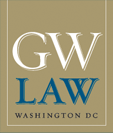Document Type
Article
Publication Date
2005
Status
Working
Abstract
Claiming that existing regulation is excessive and irrational, regulatory critics have successfully convinced Congress and the White House to implement a plethora of procedural requirements to analyze a proposed regulation before it is promulgated. In our book, Risk Regulation at Risk: Restoring A Pragmatic Approach (2003), we argued that the previous initiatives address the possibility of regulatory failure on the wrong end of the regulatory policy implementation process. We suggested that one way of improving regulation would be to rely on incremental adjustments in regulation on the back end of the regulatory process. This article addresses in more detail the potential of two types of back-end processes (deadline extensions and waivers, exceptions, and variances) by examining five federal statutes (administered by EPA and OSHA) that provide opportunities for the two types of adjustments we are studying. We find that these adjustment provisions are generally consistent with the precautionary tilt of the statutes in which they are located because they still require the regulated entity to do the best it can to protect people and the environment. Where such protective mechanisms are absent, we urge that the statutes be amended to include them. We also consider the procedures by which requests for back-end adjustments are currently processed. We support the use of notice and comment procedures because more elaborate procedures are not necessary to promote rational decision-making, given the nature of the issues likely to be raised in back-end adjustment proceedings. We are concerned, however, about the extent to which effective public participation will occur under these procedures. We therefore endorse two steps to enhance the transparency of back-end adjustment decision-making: the establishment of electronic reading rooms and the issuance by agencies of annual reports on back-end adjustments
SSRN Link
http://ssrn.com/abstract=653781
Recommended Citation
Glicksman, Robert L. and Shapiro, Sidney A., "Improving Regulation Through Incremental Adjustment" (2005). GW Law Faculty Publications & Other Works. 612.
https://scholarship.law.gwu.edu/faculty_publications/612
